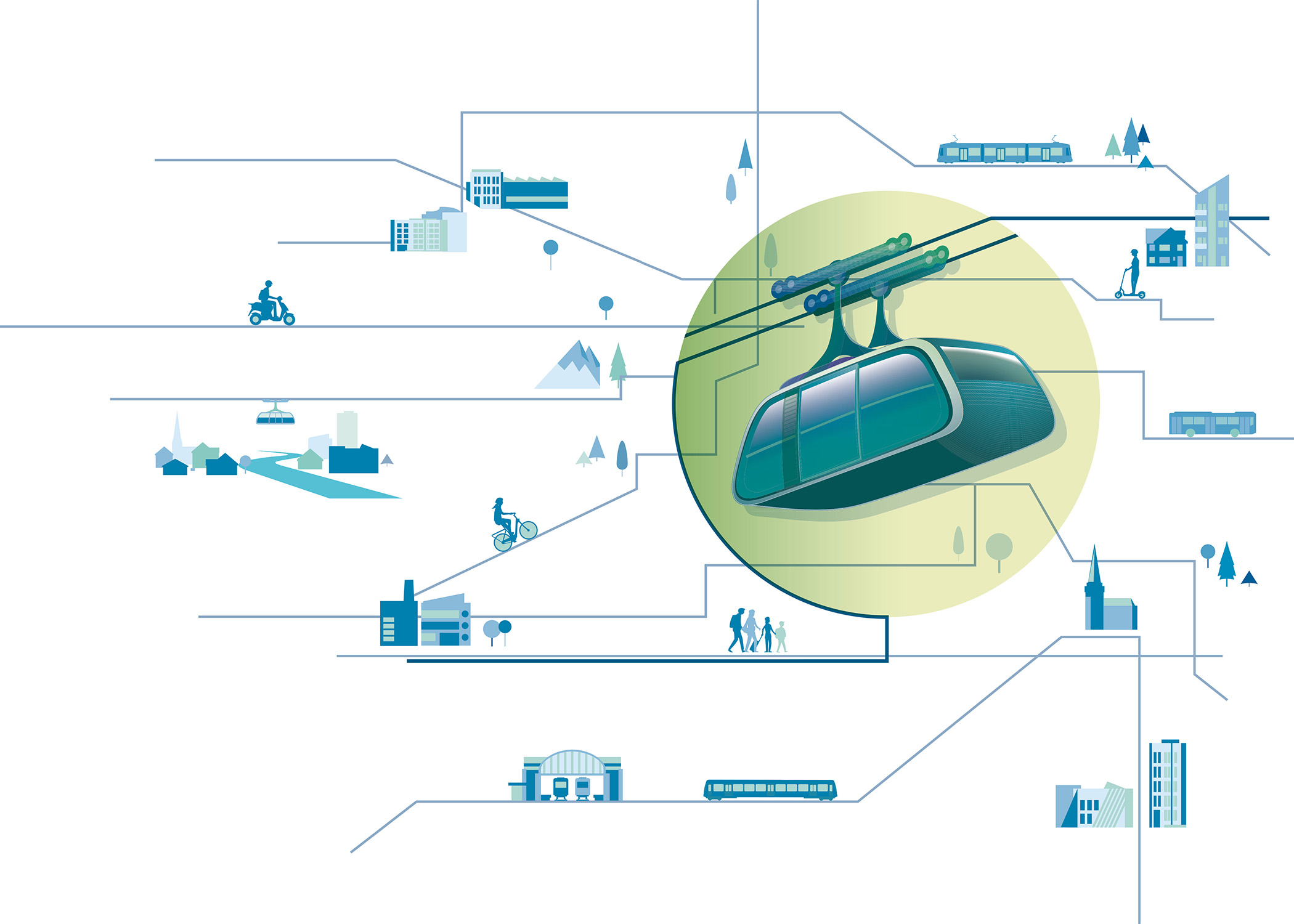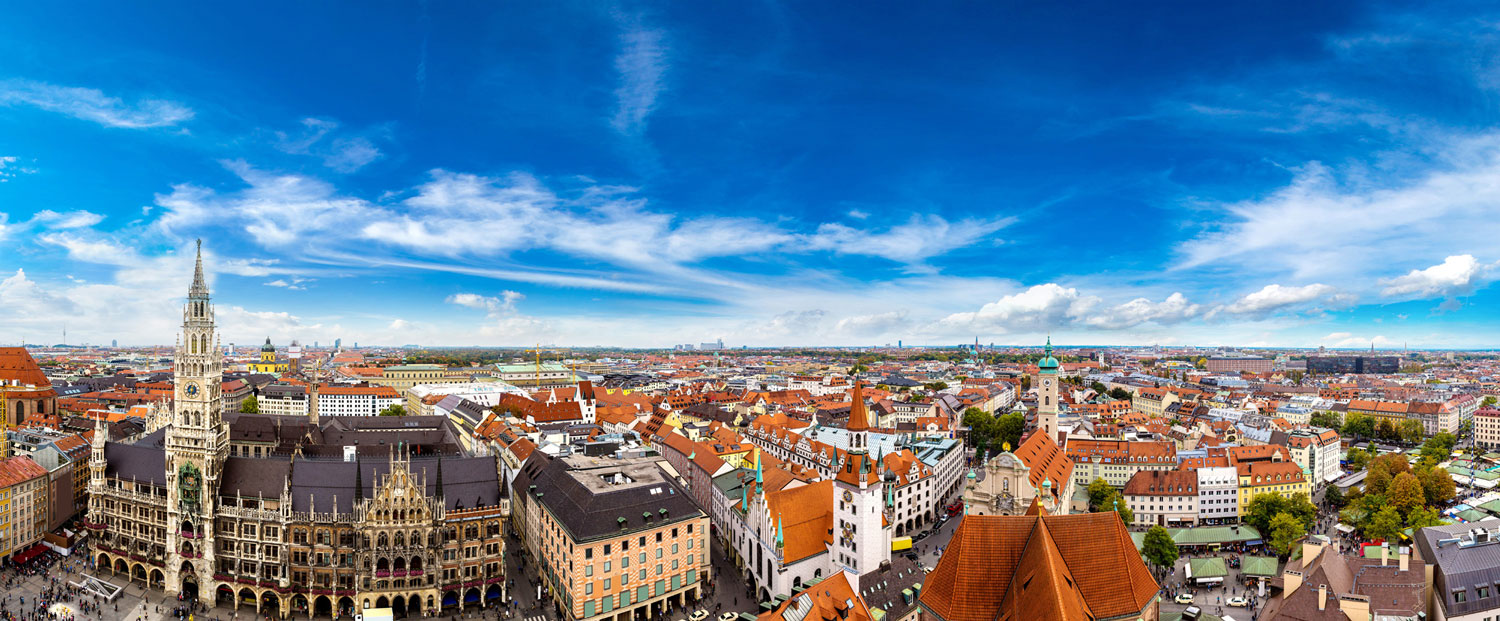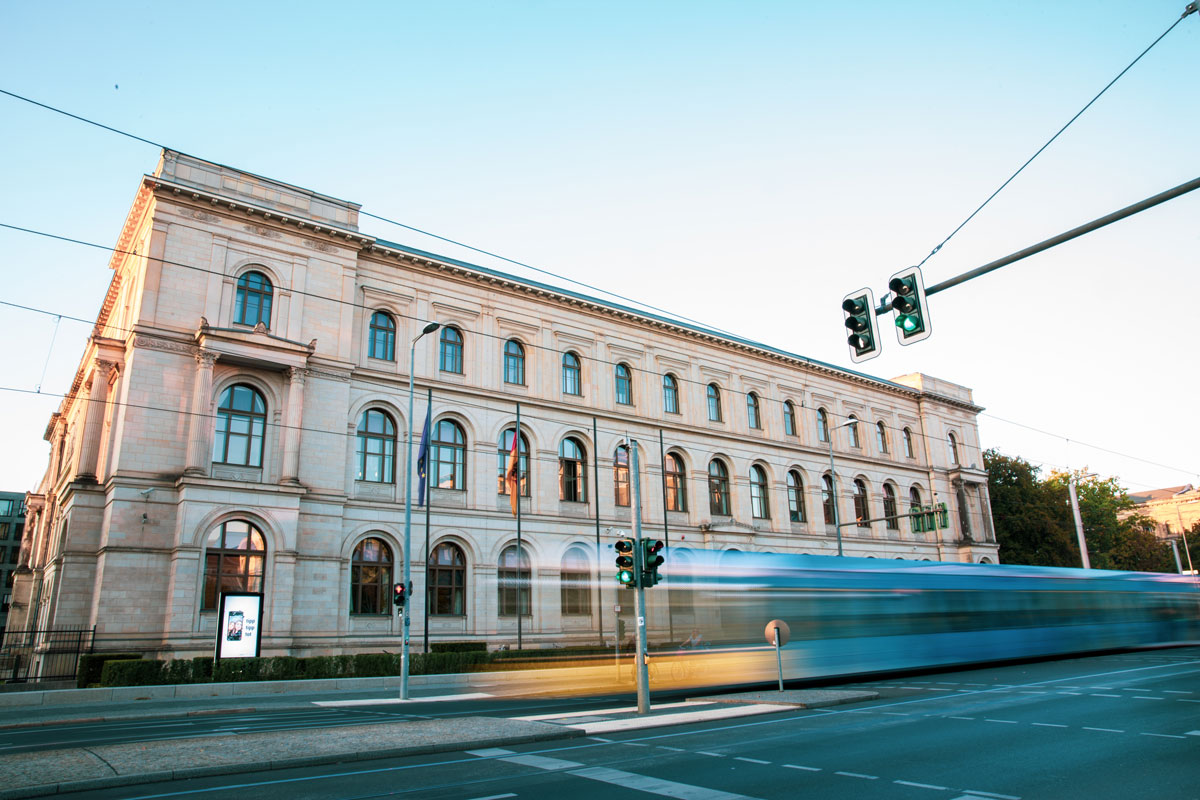
Cities
Guide for urban ropeways
The tool is entitled “Urban ropeways in public transport” and supports municipalities or municipal transport companies in the realization of urban ropeways – from the project idea through planning and construction to operation.
The guide is intended to promote ropeways as a sustainable mobility service in urban areas. The aim is to create a national standard for urban ropeways in Germany that cities and municipalities can use as a guide. This is because Germany has little experience to date with ropeway systems in urban areas.
Initial situation
Currently, numerous cities across Germany are considering the construction of urban ropeways. The innovative and environmentally friendly transport system can close gaps in local public transport, replace bus services or connect rural areas (e.g. by combining them with commuter parking).
In addition, compared to other transport systems, ropeways are climate-friendly, inexpensive, can be implemented quickly and are reliable. Another practical advantage is the permament availability, because the cabins of a circulating ropeway do not need a timetable.
Ropeways also save space and are always free to travel; there are no obstacles for them. Last but not least, they have been well tested through experience in alpine tourism and are considered to be extremely robust and largely independent of weather conditions.

Sebastian Beck
Drees & Sommer SE, Co-author of the guide
“Particularly in larger cities, roads and public transport are reaching their limits or have long been over the limit. In Germany, too, the ropeway is therefore increasingly appearing on the radar screens of transport planners as a means of urban transport in view of increasing traffic jams, noise and emissions. While there is no patent remedy for an urban ropeway system, as the infrastructure, traffic volume or topography are different in every city, the guide provides valuable guidance on where the use of a ropeway is worthwhile and what it can achieve in public transport. The guide provides German cities and municipalities with well-founded information on how ropeway projects can be integrated in a sensible way in terms of urban and traffic planning and how to increase acceptance of this mode of transport among the population. The focus is on social and political aspects, the comparison of costs and benefits, and the introduction of a national standard.”
Help for urban ropeways
All these advantages have also convinced the German Federal Ministry of Transport of the urban ropeway. However, German municipalities interested in building urban ropeways currently have few references to draw on.
For this reason, the ministry has set up the Urban Ropeways Working Group in 2019 to discuss federal support options with representatives from municipalities, the federal states and academia.
Guidelines developed
The ministry has commissioned the Stuttgart-based planning and consulting firm Drees & Sommer SE, together with the Verkehrswissenschaftliches Institut Stuttgart GmbH (VWI), to develop the said guideline on the integration of urban ropeway projects in terms of urban and traffic planning.
The study analyzes the integration of urban ropeways in urban and traffic planning, existing ropeway projects abroad, the status of planning and experience in Germany, and six high-flyer cities in Germany as examples.
High-flyer
Munich is one of the six German cities that participated in the guideline process

Six high-flyer cities
The German Federal Ministry of Transport has joined forces with the six cities of Bonn, Frankfurt am Main, Munich, Stuttgart, Leipzig and Kiel to discuss their ideas, plans and experiences for ropeway systems:
Where are the opportunities? Where is the potential? Where are the difficulties or obstacles?
In workshops with municipal representatives and citizens, particular attention was paid to the aspects of traffic, urban development, the environment and citizen participation. This is because the early involvement of citizens is crucial. The results of the workshops were incorporated into the guide.
Content of the guide
On the one hand, the guideline includes general principles (e.g. fields of application, ropeway systems, legal framework conditions) and an
exemplary project procedure, which can be used as a guideline for the implementation of ropeway projects.
On the other hand, the areas of traffic, environment and urban integration are dealt with, as well as the technical infrastructure and the operation of ropeways. The topics of evaluation, investment and funding are also covered.
Funding
The German Ministry of Transport has included ropeways as eligible projects.

Financial support
There is also money for urban ropeways: The Federal Ministry of Transport has included ropeways as eligible projects in the latest amendment to the Municipal Transport Financing Act (GVFG; federal funding for local transport infrastructure):
Ropeway projects are eligible for funding of up to 75 percent of eligible costs under the GVFG federal program, provided the minimum project size is 30 million euros.
Funding for the project must be in line with European Union state aid law. This requires discussion on a case-by-case basis.
Evaluation facilitated
Investment in the construction or expansion of a ropeway system must be preceded by a macroeconomic assessment in order to be supported by federal financial assistance.
The corresponding proof of economic viability must be provided in accordance with the uniform nationwide calculation procedure of the Standardized Assessment.
The new version of the Standardized Assessment, which will be published in 2022, will make it much easier to provide a comprehensive presentation of the social, transport and macroeconomic benefits of public transport projects, including urban ropeways.
It is the new basis for pro-rata federal funding as proof of economic viability under the Municipal Transport Financing Act (GVFG).







